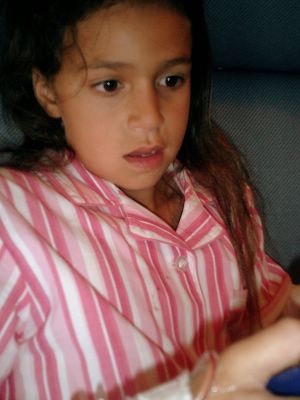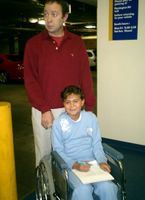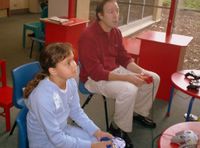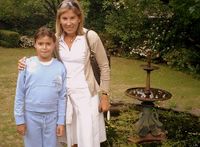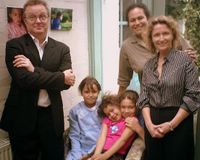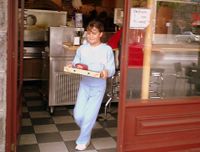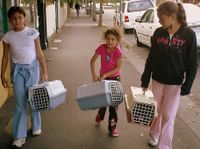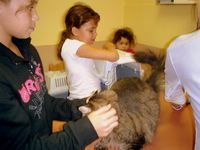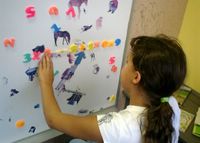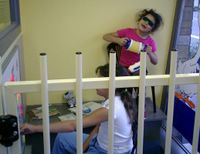Medical notes [gleaned from the Internet]
Gamma Knife radiosurgery is very attractive in children with complex deep seated AVMs. Given their long period of risk for recurrent hemorrhage, 25 to 50 percent chance of size increase and tendency toward seizures, observing these lesions and taking no treatment action is not very attractive.
A multidisciplinary team of neurosurgeons, neuroradiologists, neurologists and neuropsychologists is involved in discussing the case, in order to develop an appropriate treatment plan.
Radiosurgery success is inversely related to the size and flow rate of AVMs. The usual time to resolution and occlusion in adults is two to three years for AVMs approximately 3cm in size [Rosie's AVM is 1.5cm]. For reasons as yet unclear, children have a shorter time to obliteration of the AVM after radiosurgery treatment than adults. It is not unusual to see a child's AVM disappear in less than one year and even six months past radiosurgery. For lesions 3cm or less, the rate of complete occlusion approaches 80 percent with a less than 1 percent treatment mortality [death] and less than 3 percent treatment morbidity [complication].
Where appropriate with AVMs, radiosurgery is easy on the child, cost effective and allows a rapid return to all activities with minimal risk.
The effect of the focused radiation on the AVM is realized over many months. While the precise mechanism of radiosurgery's action on the AVM is still not clearly understood, it is thought to act on the endothelial cells lining its blood vessels. These cells tend to multiply after radiosurgery and then become thrombolytic or clot-producing. These clots diminish blood flow through the tangle of vessels, thereby reducing the risk of hemorrhage.
Successive MRIs and angiograms allow neurosurgeons and neuroradiologists to monitor blood flow through the AVM and observe its decrease in size. The size decreases over a period of one to three years. Occasionally, further radiosurgerical treatment is required for large AVMs after two or three years of observation. Research suggests the obliteration rate for small AVMs treated radiosurgically to range between 80 and 90 percent upon two-year follow-up.
Gamma Knife radiosurgery is playing a larger role than ever in children with specific neurosurgical disorders and tumors. It is likely its use will expand in the treatment of both low-grad and malignant intracranial tumors. Its use as an adjunct treatment to surgery and external beam radiation has become more defined in recent years. In some instances, it may replace surgery and/or standard fractionated (over time) radiation therapy. It will remain the gold standard for treating many AVMs.
